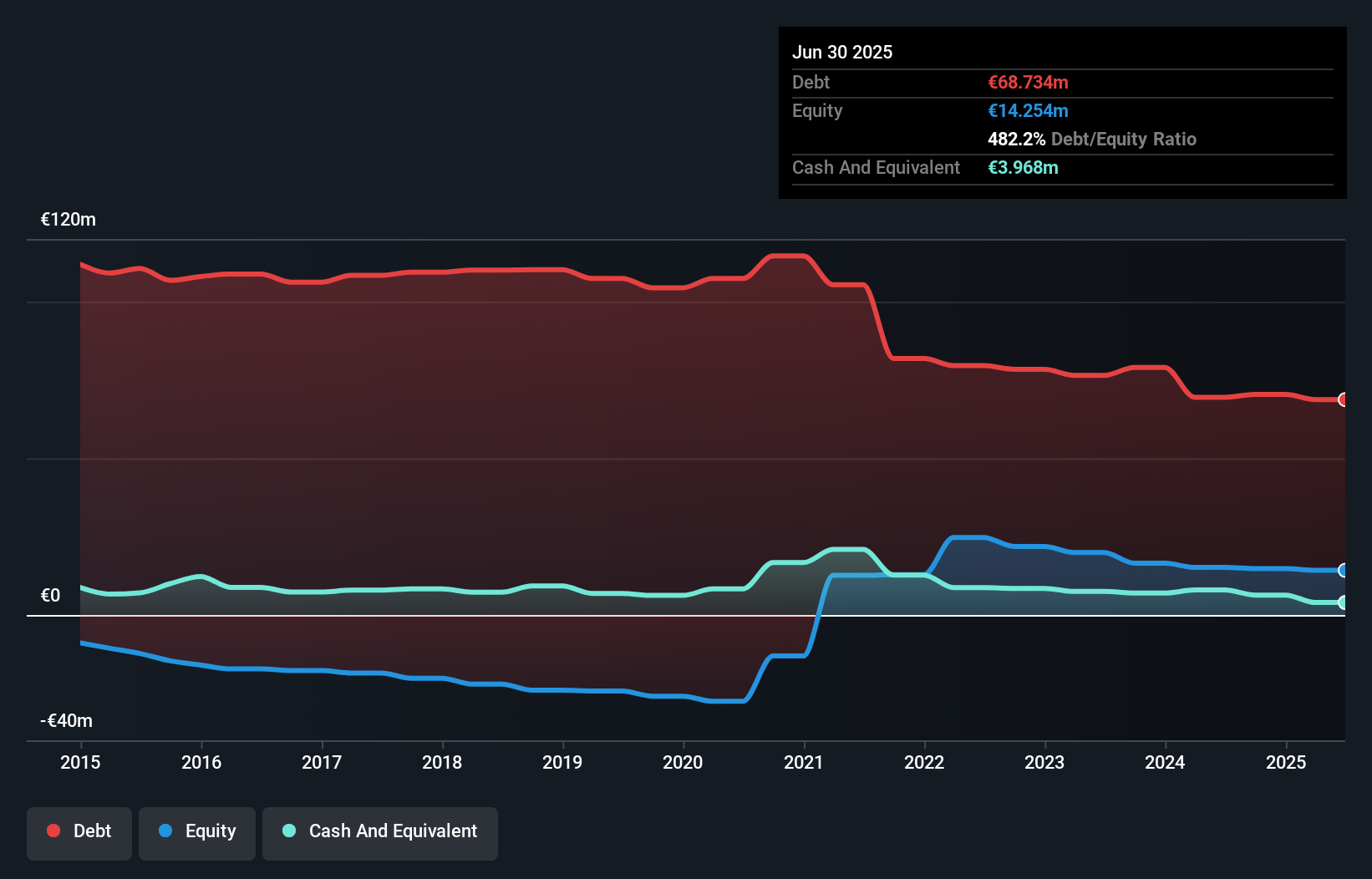Some say volatility, rather than debt, is the best way to think about risk as an investor, but Warren Buffett famously said that 'Volatility is far from synonymous with risk.' When we think about how risky a company is, we always like to look at its use of debt, since debt overload can lead to ruin. We note that Sidma Steel S.A. (ATH:SIDMA) does have debt on its balance sheet. But the more important question is: how much risk is that debt creating?
What Risk Does Debt Bring?
Debt assists a business until the business has trouble paying it off, either with new capital or with free cash flow. In the worst case scenario, a company can go bankrupt if it cannot pay its creditors. However, a more common (but still painful) scenario is that it has to raise new equity capital at a low price, thus permanently diluting shareholders. Of course, debt can be an important tool in businesses, particularly capital heavy businesses. The first step when considering a company's debt levels is to consider its cash and debt together.
What Is Sidma Steel's Net Debt?
As you can see below, Sidma Steel had €68.7m of debt, at June 2025, which is about the same as the year before. You can click the chart for greater detail. However, because it has a cash reserve of €3.97m, its net debt is less, at about €64.8m.

How Healthy Is Sidma Steel's Balance Sheet?
Zooming in on the latest balance sheet data, we can see that Sidma Steel had liabilities of €72.2m due within 12 months and liabilities of €50.8m due beyond that. Offsetting these obligations, it had cash of €3.97m as well as receivables valued at €55.2m due within 12 months. So its liabilities outweigh the sum of its cash and (near-term) receivables by €63.8m.
The deficiency here weighs heavily on the €24.5m company itself, as if a child were struggling under the weight of an enormous back-pack full of books, his sports gear, and a trumpet. So we'd watch its balance sheet closely, without a doubt. After all, Sidma Steel would likely require a major re-capitalisation if it had to pay its creditors today.
See our latest analysis for Sidma Steel
In order to size up a company's debt relative to its earnings, we calculate its net debt divided by its earnings before interest, tax, depreciation, and amortization (EBITDA) and its earnings before interest and tax (EBIT) divided by its interest expense (its interest cover). Thus we consider debt relative to earnings both with and without depreciation and amortization expenses.
Weak interest cover of 0.17 times and a disturbingly high net debt to EBITDA ratio of 29.2 hit our confidence in Sidma Steel like a one-two punch to the gut. The debt burden here is substantial. One redeeming factor for Sidma Steel is that it turned last year's EBIT loss into a gain of €871k, over the last twelve months. When analysing debt levels, the balance sheet is the obvious place to start. But it is Sidma Steel's earnings that will influence how the balance sheet holds up in the future. So if you're keen to discover more about its earnings, it might be worth checking out this graph of its long term earnings trend.
Finally, a company can only pay off debt with cold hard cash, not accounting profits. So it is important to check how much of its earnings before interest and tax (EBIT) converts to actual free cash flow. During the last year, Sidma Steel burned a lot of cash. While investors are no doubt expecting a reversal of that situation in due course, it clearly does mean its use of debt is more risky.
Our View
To be frank both Sidma Steel's conversion of EBIT to free cash flow and its track record of staying on top of its total liabilities make us rather uncomfortable with its debt levels. Having said that, its ability to grow its EBIT isn't such a worry. Considering all the factors previously mentioned, we think that Sidma Steel really is carrying too much debt. To us, that makes the stock rather risky, like walking through a dog park with your eyes closed. But some investors may feel differently. The balance sheet is clearly the area to focus on when you are analysing debt. But ultimately, every company can contain risks that exist outside of the balance sheet. We've identified 3 warning signs with Sidma Steel (at least 2 which are a bit concerning) , and understanding them should be part of your investment process.
If you're interested in investing in businesses that can grow profits without the burden of debt, then check out this free list of growing businesses that have net cash on the balance sheet.
New: Manage All Your Stock Portfolios in One Place
We've created the ultimate portfolio companion for stock investors, and it's free.
• Connect an unlimited number of Portfolios and see your total in one currency
• Be alerted to new Warning Signs or Risks via email or mobile
• Track the Fair Value of your stocks
Have feedback on this article? Concerned about the content? Get in touch with us directly. Alternatively, email editorial-team (at) simplywallst.com.
This article by Simply Wall St is general in nature. We provide commentary based on historical data and analyst forecasts only using an unbiased methodology and our articles are not intended to be financial advice. It does not constitute a recommendation to buy or sell any stock, and does not take account of your objectives, or your financial situation. We aim to bring you long-term focused analysis driven by fundamental data. Note that our analysis may not factor in the latest price-sensitive company announcements or qualitative material. Simply Wall St has no position in any stocks mentioned.
About ATSE:SIDMA
Sidma Steel
Engages in processing and trading of steel products in Greece and internationally.
Excellent balance sheet with low risk.
Market Insights
Community Narratives




